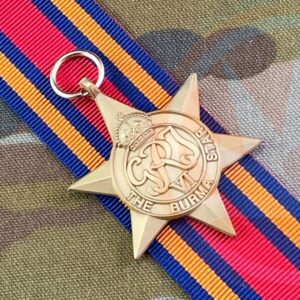The Victory Medal was authorised in 1919 to commemorate the victory of the Allied Forces over the Central Powers. Each of the Allied nations issued a ‘Victory Medal’ to their own nationals. Each nation used the standard ribbon but used different designs on the medal to reflect national identity and custom. A number had the figure of Victory on the obverse. Australians were awarded the medal issued by Great Britain. The medal was awarded to prescribed classes of persons who entered a theatre of war on duty between 5 August 1914 and 11 November 1918.
The medal is bronze with a winged figure of Victory on the obverse. The reverse has the words ‘THE GREAT WAR FOR CIVILISATION’ surrounded by a laurel wreath. The ribbon has a ‘two rainbow’ design, with the violet from each rainbow on the outside edges moving through to a central red stripe where both rainbows meet.
A member mentioned in despatches (MID) for service during World War 1 wears a bronze spray of oak leaves on the Victory Medal ribbon. Only one emblem is worn no matter how many times a member may have been ‘mentioned’. When a ribbon alone is worn a slightly smaller insignia is worn as a ribbon emblem.










Reviews
There are no reviews yet.